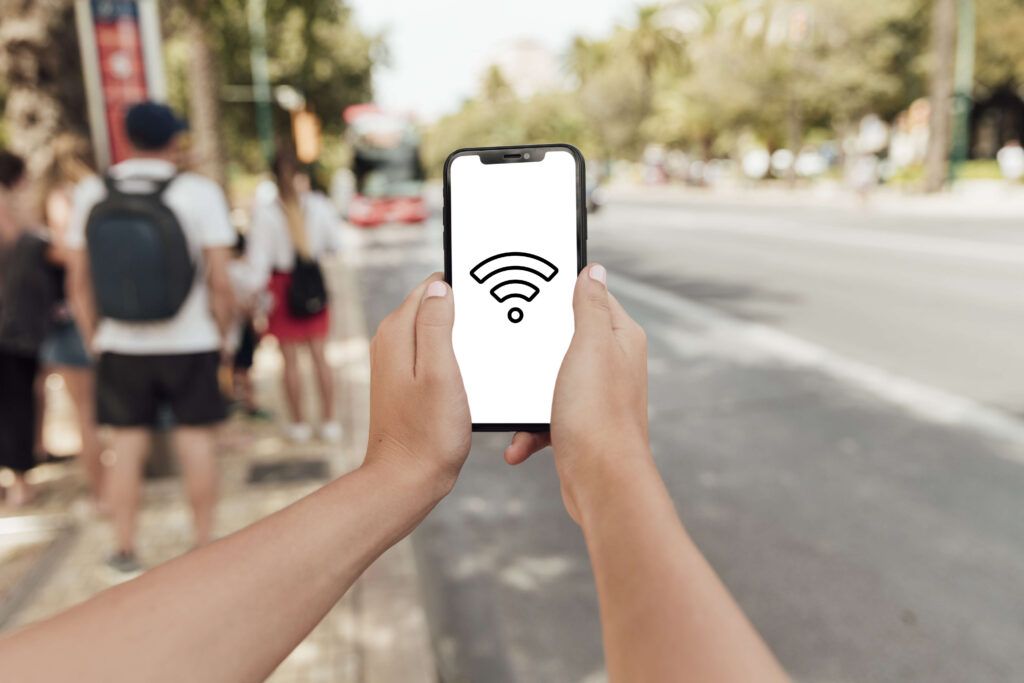Public Wi-Fi has become a ubiquitous part of modern life, offering convenience and connectivity in places like coffee shops, airports, hotels, and libraries. However, this convenience often comes at a cost: security risks. Public Wi-Fi networks are notoriously vulnerable to cyberattacks, putting your personal information, financial data, and online privacy at risk. In this article, we’ll explore the dangers of public Wi-Fi, how hackers exploit these networks, and practical steps you can take to protect yourself.
Why Public Wi-Fi Is Dangerous
Public Wi-Fi networks are inherently less secure than private networks. Unlike your home Wi-Fi, which is password-protected and encrypted, public Wi-Fi is often open and accessible to anyone within range. This lack of security makes it an attractive target for cybercriminals.

1. Man-in-the-Middle Attacks
One of the most common threats on public Wi-Fi is the man-in-the-middle (MITM) attack. In this scenario, a hacker intercepts the communication between your device and the network. They can eavesdrop on your online activities, steal sensitive information like login credentials, or even alter the data being transmitted.
2. Malware Distribution
Public Wi-Fi networks are often used as a medium to distribute malware. Hackers can exploit security vulnerabilities in your device to install malicious software without your knowledge. Once installed, malware can steal data, monitor your activities, or even take control of your device.
3. Rogue Hotspots
Cybercriminals sometimes set up fake Wi-Fi networks, known as rogue hotspots, to trick users into connecting. These networks often have names similar to legitimate ones, such as “Free Airport Wi-Fi” or “Cafe Guest Network.” Once connected, the hacker can monitor all your online activities and steal sensitive information.
4. Unencrypted Networks
Many public Wi-Fi networks lack encryption, meaning the data you send and receive is transmitted in plain text. This makes it easy for hackers to intercept and read your information, including emails, passwords, and credit card details.
How Hackers Exploit Public Wi-Fi
Understanding how hackers operate on public Wi-Fi networks can help you better protect yourself. Here are some common techniques they use:
1. Packet Sniffing
Packet sniffing involves using software to capture and analyze data packets transmitted over a network. On an unencrypted public Wi-Fi network, hackers can use packet sniffing tools to extract sensitive information like login credentials and financial data.
2. Session Hijacking
Session hijacking occurs when a hacker takes over an active session between your device and a website. For example, if you’re logged into your bank account, the hacker can hijack the session and gain access to your account.
3. Evil Twin Attacks
In an evil twin attack, a hacker creates a fake Wi-Fi network that mimics a legitimate one. Unsuspecting users connect to the fake network, allowing the hacker to monitor their activities and steal data.
4. Sidejacking
Sidejacking, also known as session sidejacking, involves intercepting unencrypted cookies sent over a network. These cookies often contain session IDs, which hackers can use to impersonate you and gain unauthorized access to your accounts.
How to Stay Safe on Public Wi-Fi
While public Wi-Fi poses significant risks, there are several steps you can take to protect yourself.
1. Use a Virtual Private Network (VPN)
A VPN encrypts your internet traffic, making it difficult for hackers to intercept your data. When using public Wi-Fi, always connect to a VPN to ensure your online activities remain private and secure.
2. Avoid Accessing Sensitive Information
Avoid logging into bank accounts, making online purchases, or accessing other sensitive information while connected to public Wi-Fi. If you must perform these tasks, use your mobile data or wait until you’re on a secure network.
3. Enable Two-Factor Authentication (2FA)
Two-factor authentication adds an extra layer of security to your accounts. Even if a hacker steals your password, they won’t be able to access your account without the second authentication factor, such as a code sent to your phone.
4. Turn Off Sharing
When connected to public Wi-Fi, disable file and printer sharing on your device. This prevents other users on the network from accessing your files.
5. Use HTTPS Websites
Always ensure the websites you visit use HTTPS encryption. Look for a padlock icon in the address bar, which indicates that the connection is secure.
6. Keep Your Software Updated
Regularly update your operating system, browser, and antivirus software to protect against known vulnerabilities. Hackers often exploit outdated software to gain access to devices.
7. Forget the Network After Use
After using a public Wi-Fi network, make sure to forget the network on your device. This prevents your device from automatically reconnecting to the network in the future.
Common Myths About Public Wi-Fi Safety
There are several misconceptions about public Wi-Fi safety that can put users at risk. Let’s debunk some of the most common myths.
1. “I’m Not a Target, So I’m Safe”
Many people believe they’re not important enough to be targeted by hackers. However, cybercriminals often cast a wide net, targeting anyone connected to a public Wi-Fi network.
2. “Using a Password-Protected Network Is Safe”
While password-protected networks are more secure than open ones, they’re not foolproof. If the password is widely shared, the network can still be compromised.
3. “I Don’t Do Anything Important Online, So I’m Safe”
Even if you’re not accessing sensitive information, hackers can still exploit your connection to install malware or steal personal data.
FAQs About Public Wi-Fi Safety
1. Is it safe to use public Wi-Fi for online banking?
No, it’s not safe to use public Wi-Fi for online banking. If you must access your bank account, use a VPN or switch to your mobile data.
2. Can hackers see what I’m doing on public Wi-Fi?
Yes, if the network is unencrypted, hackers can use tools like packet sniffing to see your online activities.
3. What’s the best way to protect myself on public Wi-Fi?
The best way to protect yourself is by using a VPN, avoiding sensitive activities, and ensuring your device’s software is up to date.
4. Are all public Wi-Fi networks dangerous?
Not all public Wi-Fi networks are dangerous, but they all carry some level of risk. It’s important to take precautions whenever you connect to one.
5. Can I use public Wi-Fi if I have antivirus software?
Antivirus software can protect you from malware, but it won’t protect your data from being intercepted on an unencrypted network. Always use a VPN for added security.
Conclusion
Public Wi-Fi offers convenience, but it also comes with significant risks. By understanding the dangers and taking proactive steps to protect yourself, you can minimize the chances of falling victim to cyberattacks. Always use a VPN, avoid accessing sensitive information, and stay vigilant when connecting to public networks. Your online safety is in your hands—take the necessary precautions to protect it.

